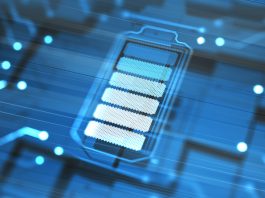Professor Balázs Kulcsár from the Department of Electrical Engineering at Chalmers University of Technology investigated how electric vehicles can be used strategically for distribution tasks while using as little energy as possible.
Electric vehicle range
The distance electric vehicles (EVs) can travel before losing power is a common concern among those who already own an EV, or are considering purchasing one, as battery depletion can have serious consequences. In order to assuage these concerns, Kulcsár and his team have developed tools to help electric distribution vehicles navigate as tactically as possible.
The study
The researchers investigated how a fleet of electric trucks can deliver goods in a complex and crowded traffic network. The challenge is planning the best routes for distribution vehicles carrying household goods, such as groceries or furniture, to several different addresses. Working out the optimal order to deliver to customers means that the vehicles can be driven for as long as possible without needing to interrupt the work to recharge.
Typically, route planning for distribution EVs has tended to assume that lowest mileage is the most efficient, and therefore focused on prioritising the shortest route. Kulcsár and his colleagues instead made overall battery usage the key goal and looked for routes with the lowest possible energy consumption.
The researchers considered multiple factors, such as speed, load, traffic information, opportunity charging points, and how mountainous some routes were, to determine the energy consumption of distribution trucks. “This will allow us to adapt route-planning to uncertain and changing conditions, minimising energy consumption and ensuring successful urban distribution.” Kulcsár said.
This data was then entered into a mathematical formula in order to create an algorithm for calculating a route that allows distribution EVs to make deliveries using as little energy as possible. Kulcsár and his team also took additional factors into account, such as drivers potentially needing to recharge their EVs, and as a result were able to create a method that reduces delivery EVs energy consumption by up to 20%.
However, because distribution EVs operate in complex situations there can be circumstances that are unforeseen, despite how accurate the algorithm is from the beginning. In order to combat this, the researchers have assured that the energy usage forecasts will be further optimised through machine learning, with data that is collected from the EVs being sent back to the tool for further input and analysis.
What these results mean for distribution EVs
The researchers found that looking beyond the distance travelled was the key to obtaining maximum distribution EV range, instead of focusing on overall energy usage. “We have developed systematic tools to learn optimal energy usage. Additionally, we can ensure that electric vehicles are not running out of battery or charging unnecessarily in complex traffic networks”, said Kulcsár.
This research was conducted in partnership with Volvo Group, who were interested in how EVs could be used for distribution tasks, and the new algorithm created by Kulcsár has found to be so efficient that Volvo Group have already applied it to their EV deliveries.









